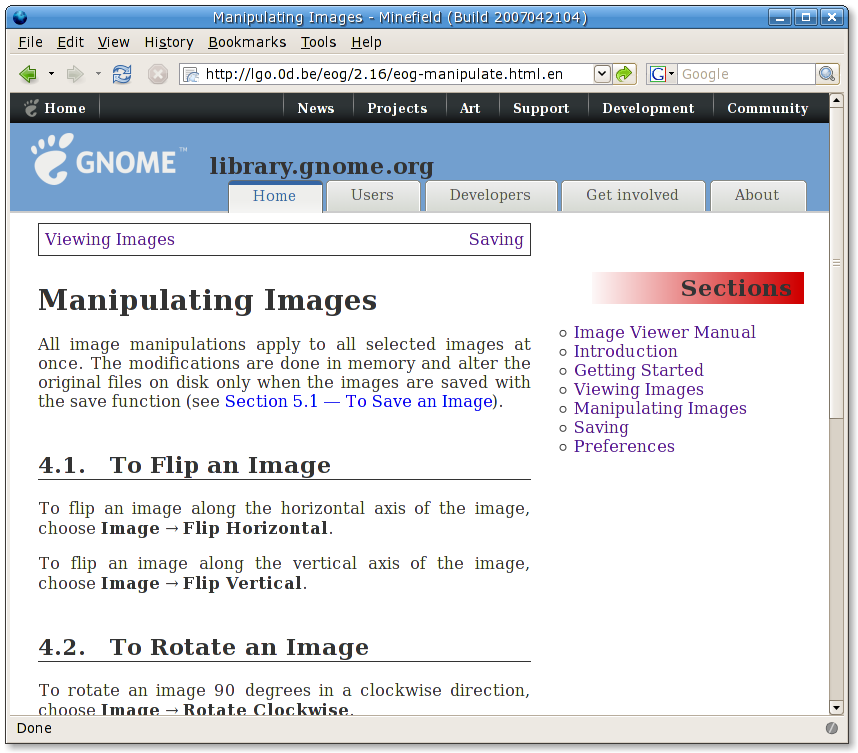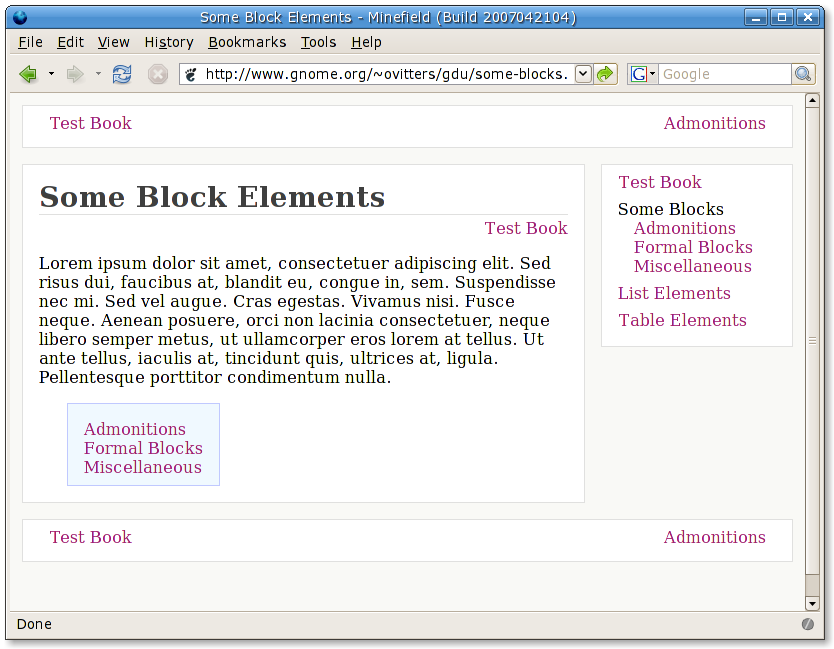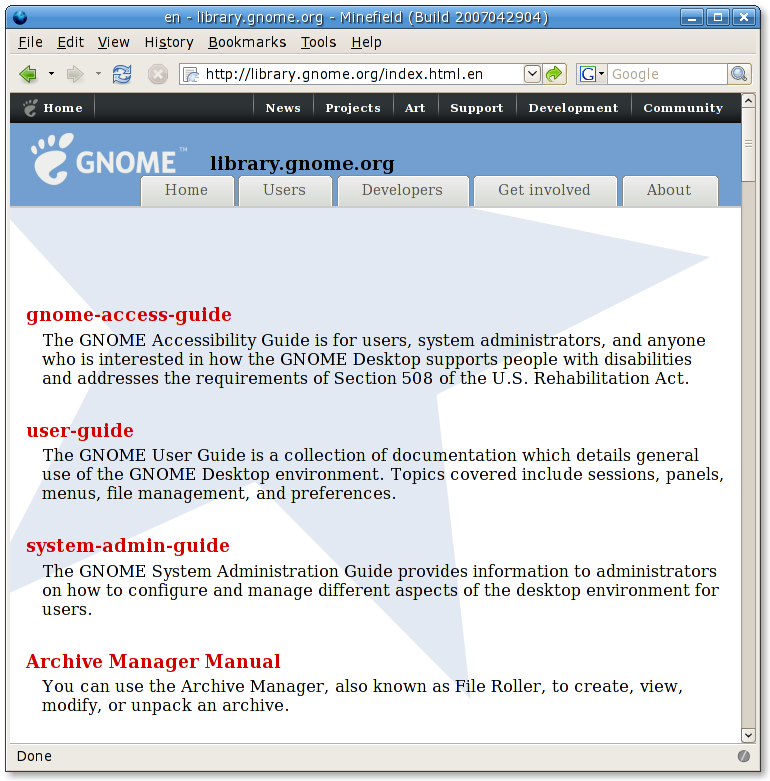We just had a first meeting in #docs about library.g.o. Frederic Peters announced a very nice library.g.o design on his library.g.o testsite. Screenshot:

This doesn’t build yet. For this we need a new gnome-doc-utils. The first test version of that is ready. Now the libgo software needs to be enhanced to make use of the new gnome-doc-utils possibilities (toc in the sidebar). A screenshot of what the new gnome-doc-utils can do:

I’ve updated the server with the gnome-doc-utils out of SVN. This means library.g.o is broken until someone updates the XSLT in the libgo software.
Mango
Lately I’ve been fixing a few things that annoyed me in mango (system used for handling the GNOME LDAP accounts):
- HTML pages didn’t use UTF-8 everywhere.
-
- Couldn’t add more than one SSH key. The other ones where silently deleted. This means those tickets could only be handled by a sysadmin, and not any accounts@ person. Plus that sysadmin had to know how to do LDAP via the commandline.
- Sending a standard mail from Mango to someone with a dot in the name gave an error message
- Emails weren’t in UTF-8
- Login box wasn’t automatically focussed
- Some of the standard email templates weren’t in mango
Above are mostly small fixes. The most annoying thing is that we can’t create UTF-8 accounts. I think this is because the openldap scheme by default doesn’t allow UTF-8 in the gecos field. However, I am not sure if I can just change that and not have it break the existing LDAP entries. Further, it shouldn’t break when e.g. a security rpm for openldap is installed.
Mango revamp (Summer of Code project)
Baris Cicek is working on enhancing mango (the system used to handle the GNOME LDAP accounts). The idea is to make the account requesting much faster and more transparent. The current ideas are listed on http://live.gnome.org/Sysadmin/Mango_Revamp (feel free to read and add comments — only at the end though!). The current method basically sucks. Ideally I’d like accounts@ to consist of only checking the new user and click either a ‘create account’ / ‘reject’ button. Before that the maintainer already approved everything (securely); the email address was verified to be correct, etc. There are some difficulties with designing the system, a few of them are:
- No list of maintainers for the different modules. There are MAINTAINERS files, which is often used as a free text field. Moreover, the email addresses often do not match. Further, I rather have LDAP have an official list than have mango rely on whatever system we use for the source code (SVN). But on the other hand, I guess maintainers would like a MAINTAINERS file more than some webinterface (guessing).
- No good way to authenticate. Sending an email with a token is not secure enough. A password is worse, when that is lost the whole SSH publickeys breaks down. I’m thinking of either handing out those client certificates or GPG. But those have problems as well. Not everyone (wants to) understand(s) GPG.
Other stuff
- Did a lot of work on reducing the outstanding tickets in RT3 (mostly accounts, also some sysadmin stuff). I am worried about the number of tickets in the stalled state (waiting for a reply from someone other than sysadmin/accounts); I guess a lot of our answers go straight into the spam folder. Currently there are about 40 tickets are in that state (it was 20-25 before I started on the tickets). Can’t wait for the new mango possibilities.
- Tried installing Zope and Plone. Gave up quickly. Seeing a security advisory on the Zope as well as the Plone site was also not encouraging. I’d rather have a rpm by Dag Wieers.



